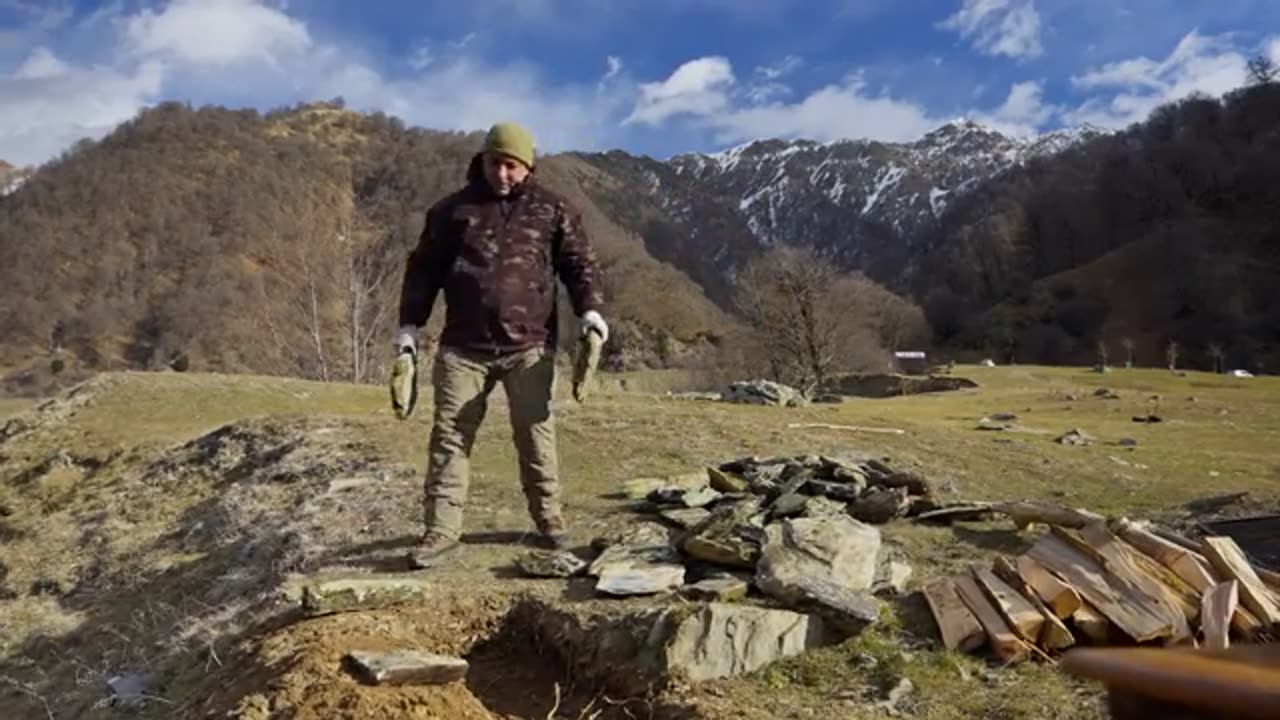Premium Only Content

Cooking Tier 1 Prime Steak on a Salt Rock
Cooking a Tier 1 Prime steak on a salt rock is a fantastic way to enhance the flavor of the meat while creating an impressive presentation. Here's a step-by-step guide to achieve the perfect steak:
---
### **What You'll Need**
- **Tier 1 Prime Steak** (e.g., ribeye, strip, or filet mignon)
- **Himalayan Salt Rock**
- Olive oil (optional)
- Tongs
- Meat thermometer
---
### **Preparation**
1. **Choose the Right Salt Rock**
- Ensure your Himalayan salt rock is clean and dry. A thicker slab is ideal for retaining heat evenly.
2. **Preheat the Salt Rock**
- Place the salt rock in a cold oven or grill to avoid cracking.
- Gradually increase the temperature over 30-45 minutes until it reaches 500–550°F (260–290°C).
- Alternatively, preheat it on a stovetop over low heat, gradually increasing to high.
3. **Prepare the Steak**
- Allow the steak to reach room temperature.
- Lightly pat it dry with paper towels.
- Optionally, brush with olive oil for extra crispness (not necessary due to the salt rock’s natural seasoning).
---
### **Cooking the Steak**
1. **Place Steak on the Salt Rock**
- Using tongs, carefully lay the steak onto the hot salt rock.
- You’ll hear an immediate sizzle—that’s what you want!
2. **Cook to Desired Doneness**
- For medium-rare: Cook each side for about 3–4 minutes (depending on thickness).
- Use a meat thermometer to check doneness:
- Rare: 125°F (52°C)
- Medium-rare: 135°F (57°C)
- Medium: 145°F (63°C)
- Avoid overcooking, as the salt rock can retain high heat.
3. **Rest the Steak**
- Remove the steak from the salt rock and let it rest for 5–10 minutes on a cutting board to redistribute juices.
---
### **Tips for Success**
- **Minimal Seasoning Needed:** The salt rock imparts subtle saltiness, so additional seasoning isn’t necessary.
- **Don’t Overuse the Salt Rock:** Frequent cooking can make the salt overly porous or uneven.
- **Maintenance:** Clean the salt rock by scraping off residue with a damp sponge. Avoid using soap, as it can absorb into the rock.
-
 LIVE
LIVE
Wendy Bell Radio
6 hours agoThe Same Old Song & Dance
9,880 watching -
 1:37:50
1:37:50
Dear America
16 hours agoAOC/Bernie 2028? + Snow White BOMBS & Wrestling Crowd Goes WILD For Trump!
45.9K12 -
 1:37:52
1:37:52
Jeff Ahern
2 hours ago $0.51 earnedMonday Madness with Jeff Ahern
9.97K -
 1:15:20
1:15:20
JULIE GREEN MINISTRIES
4 hours agoLIVE WITH JULIE
144K259 -
 1:30:46
1:30:46
Game On!
15 hours ago $3.80 earnedIt's March and we were promised MADNESS!
46.5K1 -
![Pete Santilli Infiltrates Tesla Protestors & This Is What He Found: THEY’RE INSANE! [EP 4487-8AM]](https://1a-1791.com/video/fww1/fe/s8/1/C/w/M/v/CwMvy.0kob-small-Pete-Santilli-Infiltrates-T.jpg)
The Pete Santilli Show
16 hours agoPete Santilli Infiltrates Tesla Protestors & This Is What He Found: THEY’RE INSANE! [EP 4487-8AM]
45.6K7 -
 24:04
24:04
CatfishedOnline
19 hours agoMy Mom Thinks My Girlfriend Is A Romance Scammer!
31.2K20 -
 21:33
21:33
Mrgunsngear
1 day ago $5.89 earnedLive Free Armory Falcon 9X - The Best American Made Glock Clone?
43.4K28 -
 12:44
12:44
Degenerate Jay
1 day ago $1.17 earnedHow RoboCop's Best Game Set A New Standard For Movie Video Games
28.6K8 -
 1:25:58
1:25:58
TheDozenPodcast
21 hours agoBobby Davro UNCENSORED: Full Interview
28.5K3